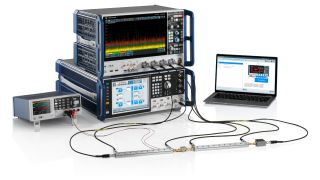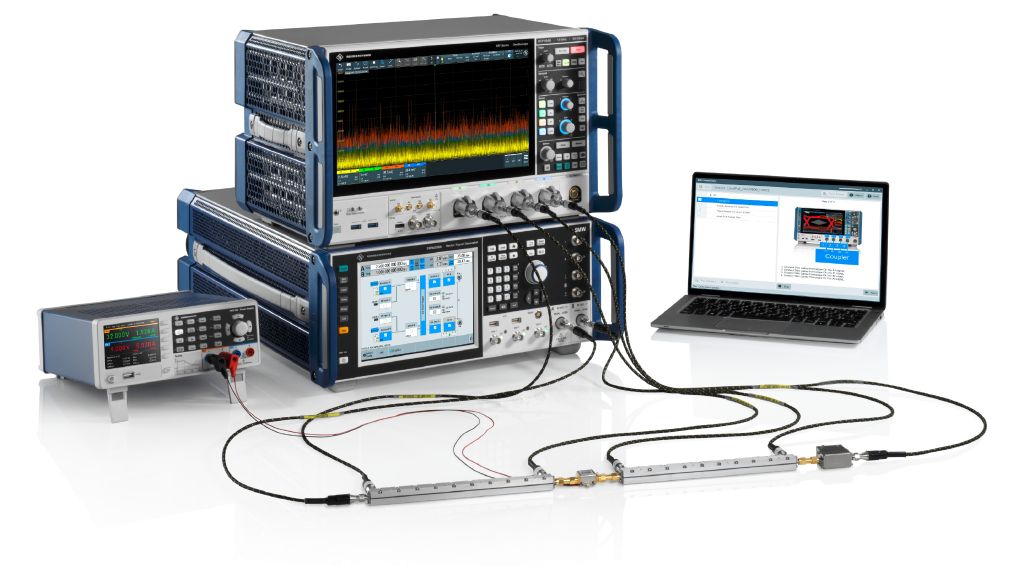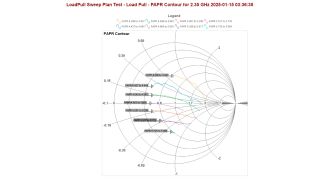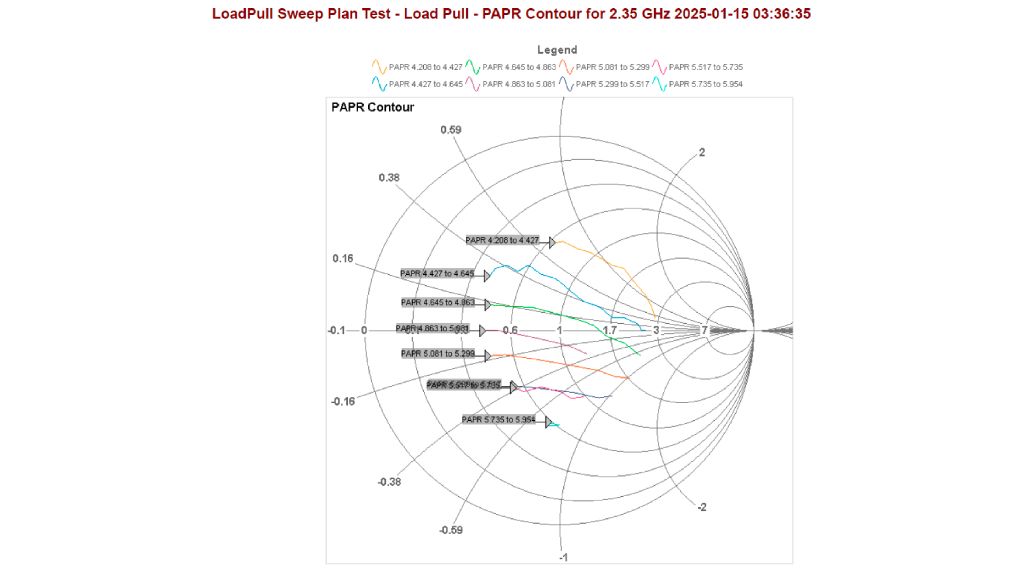Application
As with any similar network analyzer measurement, a system level calibration is required to tune to a certain point on the Smith chart accurately and reliably. All accessories in the system shall be present during the calibration, including amplifier and circulators, to govern their influence. The R&S®RTP-K98 software guides the process with a visual display showing each calibration step. The calibration follows a two-step routine starting with an open, short and match (OSM) calibration on the DUT input plane followed by a transfer to its output side using a known through.
The tune signal should differ from the input signal for greater accuracy. Though it may sound contradictory, the explanation is simple: The RF frontend adds distortion to the signal and the output signal b2 differs from the input signal a1. The tune signal a2 needs to be the same as b2 for accuracy. The application first records the DUT output signal b2 for each frequency and level point and uses this as the tune signal a2 which includes the individual distortion added by the DUT for a given scenario before tuning to different impedance points.
The R&S®RTP-K98 application software provides single impedance tuning for single point checks or, when controlled from an external user program, in a step-by-step approach. A sweep plan can create a measurement sequence across different impedances for multiple frequencies and levels to create contour plots of device KPIs such as gain, maximum output power or EVM. Since the impedance variation simply involves changing the amplitude and phase relationship between the two channels in the vector signal generator, tuning is very fast.
The automatically created test report contains all the results. In addition, all test data can be compiled in easily accessable formats such as CSV for postprocesssing.
Digital predistortion (DPD) is available by looping in R&S®VSE-K18 amplifier measurement software with the direct DPD process for the R&S®RTP oscilloscope. Using custom, predistorted signals and external evaluation, makes any user-defined DPD available as well.
The solution includes a powerful extension that helps deembed dispersive impedances for greater realism and opens up potential new applications. The impedance of an antenna is highly dependent on the frequency. Signal bandwidths of 100 MHz and more meant that even in band, this variation can no longer be neglected. The solution can use an S1P file describing the behavior of the antenna to offer a realistic scenario including frequency variation. Two S2P files can be deembedded to recreate a matching network or a bandpass filter. While using different S2P files for different matching networks, the matching network influence can be easily optimized and its design adopted in a simulation environment for an S2P representation. Even hybrid systems could be assembled while loading the tuner data as an S2P file into the R&S®RTP-K98 software for deembedding.
Finally, this oscilloscope-based solution can be used to match with envelope tracking with a second R&S®SMW200A, as well as true time-domain information about the DUT response.















